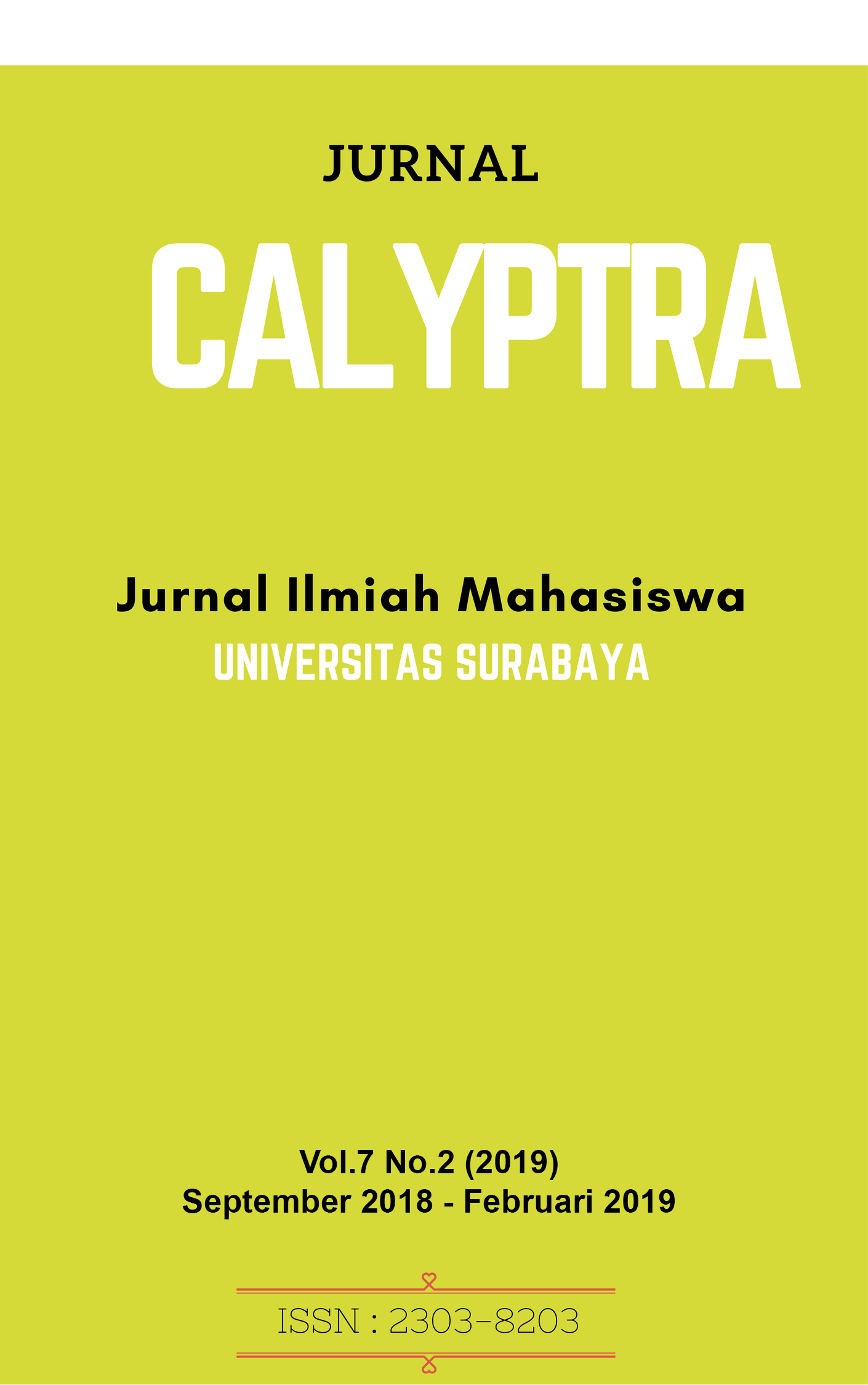ANALISIS HUBUNGAN KAUSALITAS ANTARA EKSPOR DAN PERTUMBUHAN EKONOMI INDONESIA PERIODE 1996 – 2016
 Abstract Views:
314 times
Abstract Views:
314 times
 PDF - FULL TEXT Downloads:
338 times
PDF - FULL TEXT Downloads:
338 times
Abstract
This study investigates the causal relationship between GDP and export in Indonesia for the period of 1996 to 2016. This study used a quantitative approach based on Granger causality. The data used are secondary data obtained from World Bank. This research use statistical test including unit root test, Johansen cointegration test, and Granger causality test. Research findings indicate one way causality from export to GDP, and supports the export-led growth hypothesis. The unit root test indicates that both of data are integrated or stationary at the same level (first difference), each data are stationary at the critical value 5% and 1%. Granger causality test indicates a one way causality relationship on short-term from export to GDP at the significance level 10%, and no causal relationship between both variables on long-term. Results indicate that there is one way causality relationship from export to GDP, which means that export affects GDP positively, growth on export will affect GDP positively. In order to raise GDP government should attempt to apply more trade policy that supports export growth.
Downloads
References
Ariefianto, MD 2012, Ekonometrika: Esensi dan Aplikasi dengan Menggunakan Eviews, Erlangga, Jakarta
Budiono, 1994, Teori Pertumbuhan Ekonomi, Edisi 1, BPFE, Yogyakarta.
Bachrawi, S, 2004, Pengantar Ekonomi Pembangunan, Rineka Cipta, Jakarta.
Dickey, DA & Fuller, WA 1981, ‘Likelihood ratio statistics for autoregressive time series with a unit root’, Econometrica Vol. 49, No. 4, hh. 1057-1072
Ekanayake, EM 1999, ‘Exports and Economic Growth in Asian Developing Countries: Cointegration and Error-Correction Models’, Journal of Development Economics, Vol. 24, No. 2, hh. 43-56.
Fildes, R & Makrindakis, S 1995, ‘The Impact of Empirical Accuracy Studies on Time Series Analysis and Forecasting’, International Statistical Review Vol. 63, No. 3, hh. 289-308
Granger, CW 1969, ‘Investigating Causal Relationships by Economic Models and Cross Spectral Models’ Econometrica Vol. 37, hh. 424-438
Gujarati, D, 2003, Ekonometrika Dasar, PT. Gelora Aksara Pratama, Jakarta. Halwani, H, 2005, Ekonomi Internasional dan Globalisasi Ekonomi, Ghalia
Indonesia, Bogor.
Hatemi-j, A 2002, ‘Export Performance & Economic Growth Nexus in Japan: a Bootstrap Approach’, Japan and World Economy, Vol. 14, hh. 25-33.
Jhingan, 2000, Ekonomi Pembangunan dan Perencanaan. Rajawali Press, Jakarta.
Junaidi, 2012, Ekonometrika Deret Waktu: Teori dan Aplikasi. IPB Press, Bogor.
Jung, W & Marshall, P 1985, ‘Exports, Growth and Causality in Developing Countries’, Journal of Development Economics, Vol. 18, hh. 1-12.
Lorde, T 2011, ‘Export-led Growth: A Case Study of Mexico’, International Journal of Business, Humanities and Technology, hh. 33-44.
Parida, PC, & Shahoo, P 2007, ‘Export-led Growth in South Asia: A Panel Cointegration Analysis’, International Economic Journal, Vol. 21, No. 2, hh. 155-175.
Ramos, FF 2001, ‘Exports, imports, and economic growth in Portugal: evidence from causality and cointegration analysis’, Economic Modelling, Vol. 18, hh. 613-623.
Safdari, M, Mahmoodi, M & Mahmoodi, E 2011, ‘The Causality Relationship between Export and Economic Growth in Asian Developing Countries’, American Journal of Scientific Research Vol. 25, hh. 40-45.
Salvatore, D, 2007, International Economics, John Wiley & Sons, United States of America.
Sharma, SC & Dhakal, D 1994, ‘Causal Analysis between exports and economic growth in developing countries’ Applied Economics, Vol. 26, hh. 1145- 1157.
Shirazi, NS & Manap, TA 2004. ‘Exports and Economic Growth Nexus: The Case of Pakistan’, The Pakistan Development Review, Vol. 43, No. 4, hh. 563– 581.
Sukirno, S, 2000, Makro Ekonomi Teori Pengantar, PT. Raja Grafindo Persada, Jakarta.
_________, 2003, Pengantar Teori Mikroekonomi, Edisi 3, Raja Grafindo Persada, Jakarta.
_________, 2007, Ekonomi Pembangunan: Proses, Masalah, Dan Dasar Kebijakan, Edisi 2, Kencana, Jakarta.
Todaro, MP dan Smith, SC, 2004, Pembangunan Ekonomi di Dunia Ketiga, Edisi Kedelapan, Penerbit Erlangga, Jakarta.
Ukpolo, V 1998, ‘Export and Economic Growth in South Africa: Evidence From Cointegration and Granger Causality Test’, The African Economic & Business Review, Vol. 1, No. 1, hh. 1-5.
Indonesia Eximbank, 2015, ‘Produk dan Jasa Pembiayaan Lembaga Pembiayaan Ekspor Indonesia’, diakses pada 4 Oktober 2017, http://www.indonesiaeximbank.go.id/ financial-services/financing.
Kementrian Keuangan, 2015, ‘Pemerintah Perkuat Pembiayaan Ekspor Melalui National Interest Account’, diakses pada 30 September 2017, https://www.kemenkeu.go.id/Berita/pemerintah-perkuat-pembiayaan - ekspor-melalui-national-interest-account.
Susilo, P 2016, ‘Kontribusi Industri Manufaktur Melesat’, diakses pada 28 September 2017, http://www.kemenperin.go.id/artikel/14532/ Kontribusi- Industri-Manufaktur-Melesat.
Workman, D 2017, ‘Indonesia Top 10 Exports’, diakses pada 30 September 2017, http://www.worldstopexports.com/indonesias-top-10-exports.
World Bank 2017, Data GDP (current US$), Data exports of goods and services
(current US$), diakses pada 28 Mei 2017, http://www.worldbank.org/data
- Articles published in CALYPTRA are licensed under a Creative Commons Attribution-ShareAlike 4.0 International license. You are free to copy, transform, or redistribute articles for any lawful purpose in any medium, provided you give appropriate credit to the original author(s) and the journal, link to the license, indicate if changes were made, and redistribute any derivative work under the same license.
- Copyright on articles is retained by the respective author(s), without restrictions. A non-exclusive license is granted to CALYPTRA to publish the article and identify itself as its original publisher, along with the commercial right to include the article in a hardcopy issue for sale to libraries and individuals.
- By publishing in CALYPTRA, authors grant any third party the right to use their article to the extent provided by the Creative Commons Attribution-ShareAlike 4.0 International license.



